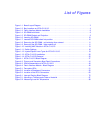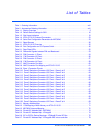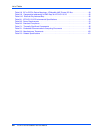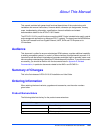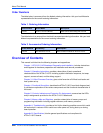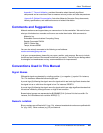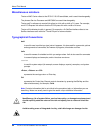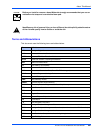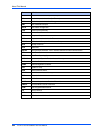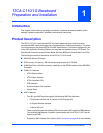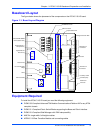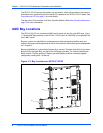
About This Manual
ATCA-C110/1G Installation and Use Manual
xix
REVIEW COPY
Appendix C, Thermal Validation, provides information about thermally significant
components and an overview of how to measure various junction and case temperatures.
Appendix D, Related Documentation, lists other Motorola Computer Group documents,
industry specifications, and additional sources of related information.
Comments and Suggestions
Motorola welcomes and appreciates your comments on its documentation. We want to know
what you think about our manuals and how we can make them better. Mail comments to:
Motorola, Inc.
Embedded Communications Computing Group
Reader Comments DW164
2900 S. Diablo Way
Tempe, Arizona 85282
You can also submit comments to the following e-mail address:
reader-comments@mcg.mot.com
In all your correspondence, please list your name, position, and company. Be sure to include
the title and part number of the manual and tell how you used it. Then tell us your feelings about
its strengths and weaknesses and any recommendations for improvements.
Conventions Used in This Manual
Signal Names
Differential signals are denoted by a trailing positive (+) or negative (-) symbol. For instance,
TX+/TX- denotes a differential transmit signal pair.
A pound sign (#) following the signal name for signals which are level significant denotes that
the signal is true or valid when the signal is low. For instance, RESET#.
A pound sign (#) following the signal name for signals which are edge significant denotes that
the actions initiated by that signal occur on high to low transition.
Bussed signal groups are represented as BUSNAME [0:N-1] where N is the bus-width. For
instance, an 8-bit address bus could be ADDR [0:7].
Numeric notation:
Binary numbers are suffixed with 'b' (e.g. 01b), whereas hexadecimal numbers are prefixed with
'0x' (e.g. 0x5F). Other numbers (e.g. 35) are decimal.





